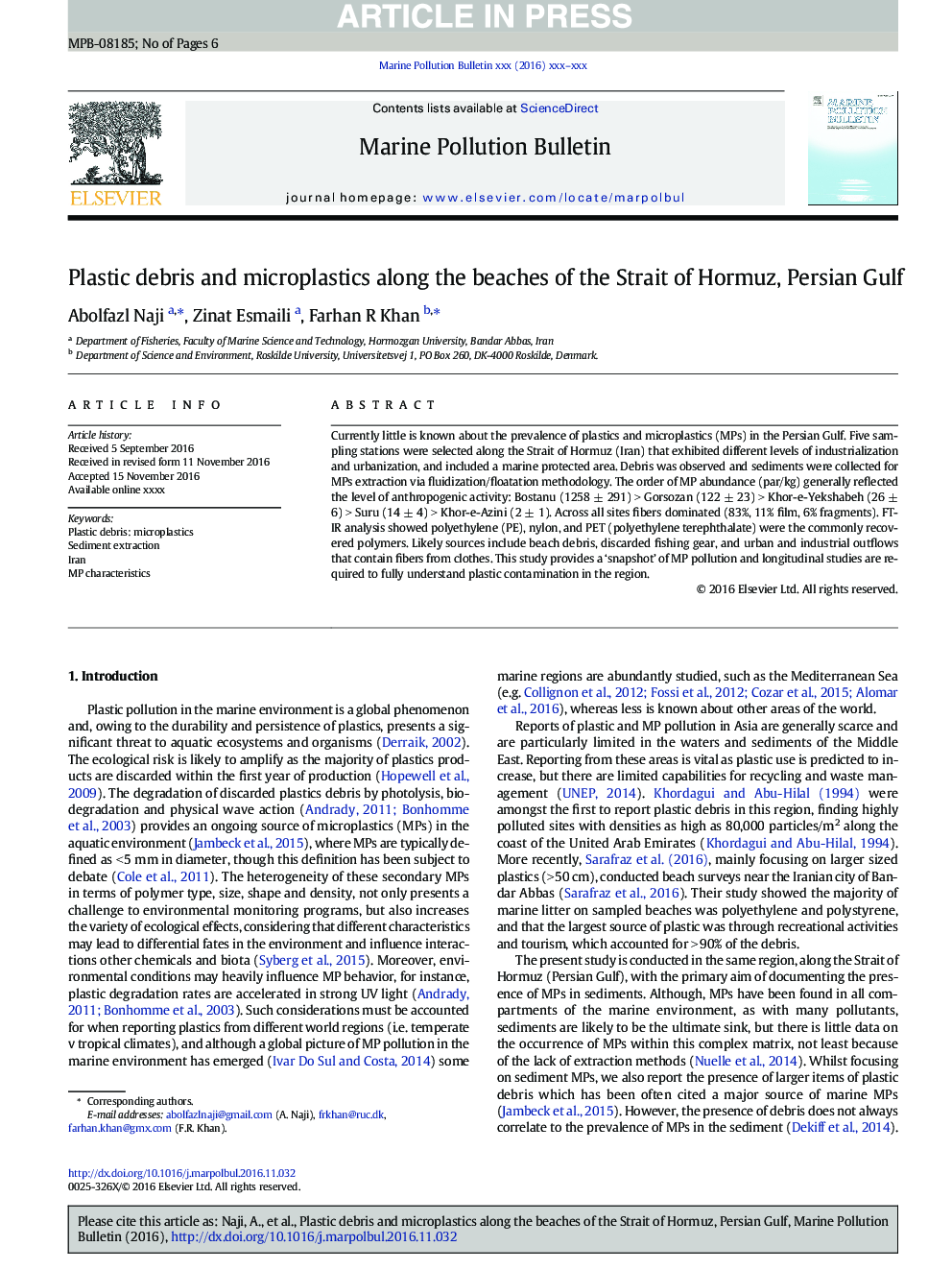| Article ID | Journal | Published Year | Pages | File Type |
|---|---|---|---|---|
| 5757744 | Marine Pollution Bulletin | 2017 | 6 Pages |
Abstract
Currently little is known about the prevalence of plastics and microplastics (MPs) in the Persian Gulf. Five sampling stations were selected along the Strait of Hormuz (Iran) that exhibited different levels of industrialization and urbanization, and included a marine protected area. Debris was observed and sediments were collected for MPs extraction via fluidization/floatation methodology. The order of MP abundance (par/kg) generally reflected the level of anthropogenic activity: Bostanu (1258 ± 291) > Gorsozan (122 ± 23) > Khor-e-Yekshabeh (26 ± 6) > Suru (14 ± 4) > Khor-e-Azini (2 ± 1). Across all sites fibers dominated (83%, 11% film, 6% fragments). FT-IR analysis showed polyethylene (PE), nylon, and PET (polyethylene terephthalate) were the commonly recovered polymers. Likely sources include beach debris, discarded fishing gear, and urban and industrial outflows that contain fibers from clothes. This study provides a 'snapshot' of MP pollution and longitudinal studies are required to fully understand plastic contamination in the region.
Keywords
Related Topics
Physical Sciences and Engineering
Earth and Planetary Sciences
Oceanography
Authors
Abolfazl Naji, Zinat Esmaili, Farhan R Khan,
